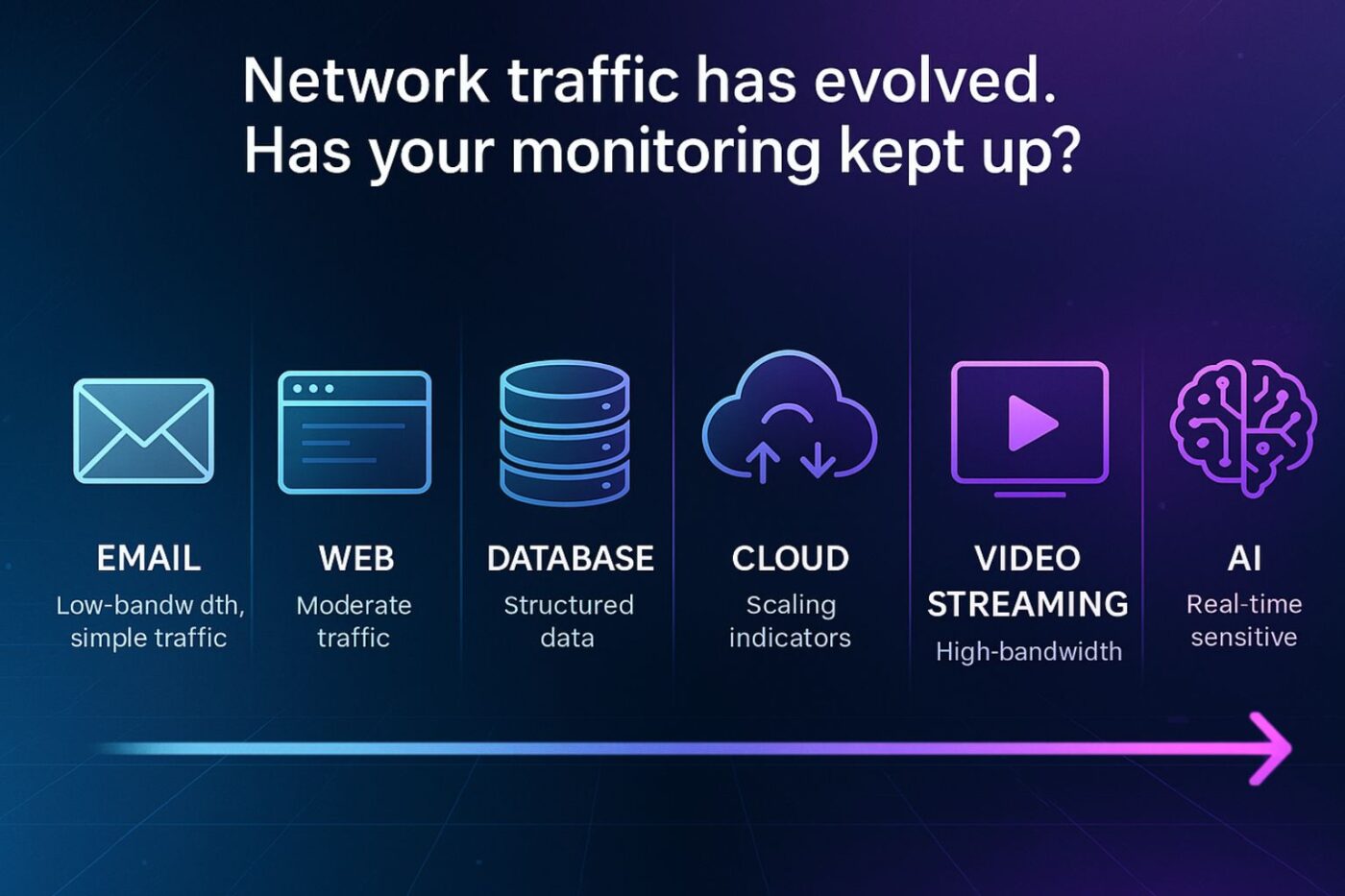Navigating Network Complexity – Continuous Monitoring for AI and Live Video Traffic

Introduction
In today’s digital landscape, network performance isn’t just a technical requirement – it’s a critical business necessity. With the rapid adoption of AI-driven applications and live video streaming services, network traffic patterns have dramatically evolved. Both AI and live video traffic require consistent low latency, high throughput, and seamless reliability. This evolution demands a fundamental shift in our approach to network monitoring. Traditional monitoring solutions, designed primarily to detect significant outages and catastrophic failures, are increasingly inadequate for identifying and resolving transient network issues, which occur frequently and subtly disrupt business operations.
Discussion
Modern networks face increasing complexity driven by AI-generated traffic and real-time video streaming. Both these types of traffic share similar demands on network performance – low latency, high reliability, and minimal jitter. However, transient issues in these scenarios rarely occur in isolation, complicating their analysis significantly. Engineers often struggle to piece together a coherent picture from fragmented alarms, logs, and isolated metrics without live data correlation.
For instance, consider a live sports broadcasting service streaming real-time video to millions of viewers. Even momentary latency spikes or jitter can severely degrade viewer experience, resulting in viewer dissatisfaction and revenue loss. Similar transient network disruptions also impact AI-driven applications, where brief latency can cause significant operational delays or inaccuracies. Traditional network monitoring systems, typically sampling metrics at intervals, miss these brief yet impactful events, forcing network engineers into challenging post-mortem analyses. Without contextual, real-time correlation, identifying the exact cause of intermittent delays becomes highly inefficient, akin to solving a complex puzzle without the full reference image.
To effectively address transient network events, continuous and proactive monitoring solutions that leverage both real-time and historical data alongside correlated alarms, metrics, and logs are indispensable. AlvaLinks CloudRider, for instance, continuously injects synthetic network traffic to proactively identify and isolate problematic segments immediately. This capability ensures timely diagnosis and remediation of transient issues before they affect end-users or business operations.
What sets AlvaLinks apart is our deep expertise and proven capabilities in managing live video traffic. Leveraging insights gained from handling high-bandwidth, low-latency live video streams, AlvaLinks applies similar observational techniques to AI-generated traffic. Our approach, rooted in live video network observability, uniquely positions AlvaLinks to accurately monitor, analyze, and troubleshoot transient events more effectively than traditional monitoring solutions.
Conclusions
As networks evolve under the impact of AI-driven traffic and live video streaming demands, transient network disruptions will increase significantly. Organizations must embrace continuous, correlated network monitoring strategies, combining real-time and historical data with comprehensive logs, alarms, and metrics. AlvaLinks, with its differentiated expertise in live video network observability, is uniquely positioned to address these sophisticated monitoring challenges, ensuring network reliability, enhancing performance, and maintaining customer satisfaction and trust.
Ready to leave outdated monitoring behind?
Discover how AlvaLinks CloudRider can help your team stay ahead of transient issues – before they impact users.
👉 Book a demo: https://alvalinks.com/contact/